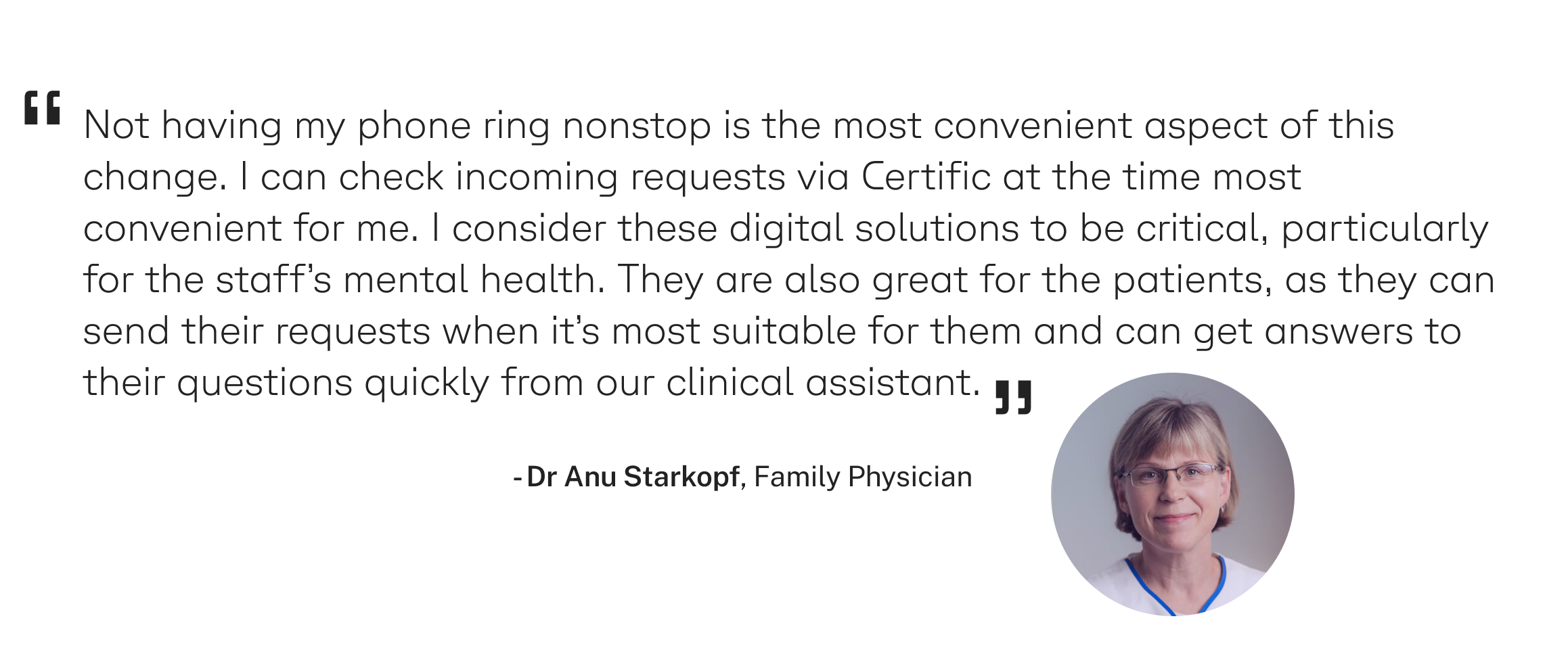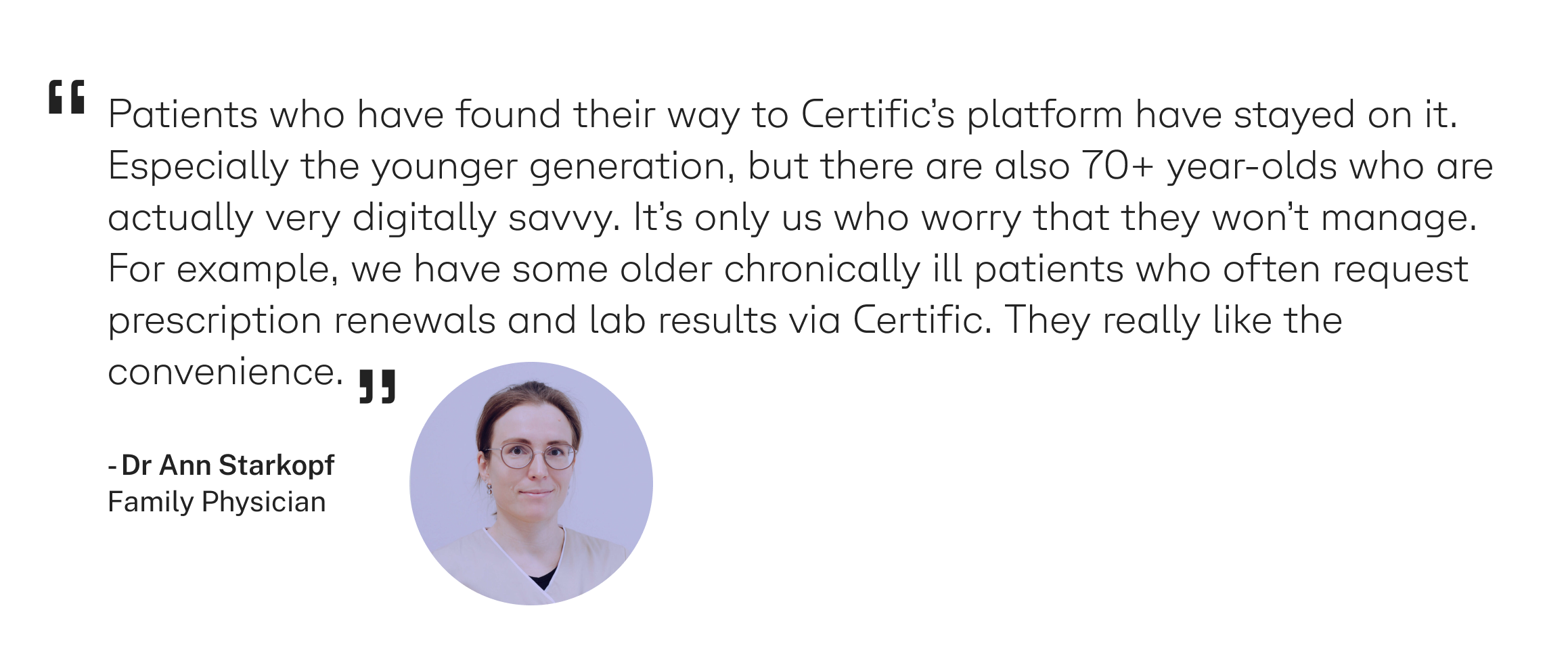In today's healthcare landscape, digital patient communication is becoming increasingly important. However, not only because of the fact that patients want to be more involved in their healthcare decisions and have greater access to their health information. There has been a growing demand for healthcare services, increasing expenditure and workforce shortages. Thus, doctors are busier than ever, facing workload and time pressures that eventually will result in general practice burnout. Chances are that it’s already happening.
Long-term vs short-term solutions against the workload crisis in general practice
In October 2022, the Irish College of General Practitioners published a discussion paper on the workforce and workload crisis in general practice in Ireland. This study puts more emphasis on longer term solutions, e.g. training more people to become GPs, developing multidisciplinary primary care teams, incentivising rural general practitioners, and attracting doctors from overseas, to name a few. While the medical workforce does require long-term planning, at Certific, we are confident that modern digital technologies can already alleviate some of the pressure today.
30% of the general practitioner's workload consists of admin work
According to studies, 30% of the general practitioner's workload consists of admin work. Certific’s patient engagement and communication platform won’t be able to eliminate it entirely, but we can reduce it considerably so that the doctors could focus on what is most important - providing quality care for their patients. While streamlining administrative tasks is probably the most significant one, patient communication platforms offer other benefits as well.
6 key benefits of digital patient communication platforms:
1. Increased Efficiency
The platform streamlines communication between patients and healthcare providers by managing patient requests and automating time consuming and repetitive tasks. For example, arranging repeat prescriptions, writing sick notes and retyping things represent a significant part of a clinician’s day. Those tasks could easily be done in just a few clicks. What’s more, instead of transcribing scattered communication over phone calls, emails, text messages, or in-person visits, doctors will receive concise medical summaries of patient queries into one platform, which can be copied directly into the patient’s medical record, saving additional time on documentation. All the information can be easily filtered, sorted and searched. The staff can then assign tasks amongst themselves, communicate with team members and with the patient in an asynchronous manner. All the above reduces time and resources required to manage patient communications, freeing up staff time to focus on patient care.
2. Improved Patient Communication
A patient communication platform allows clinicians to securely communicate with patients in a more efficient and effective manner. The practice can manage communication with patients at their convenience and follow up on patients' requests at a suitable pace without compromising on quality or losing crucial information by receiving all patient queries in one secure channel.



